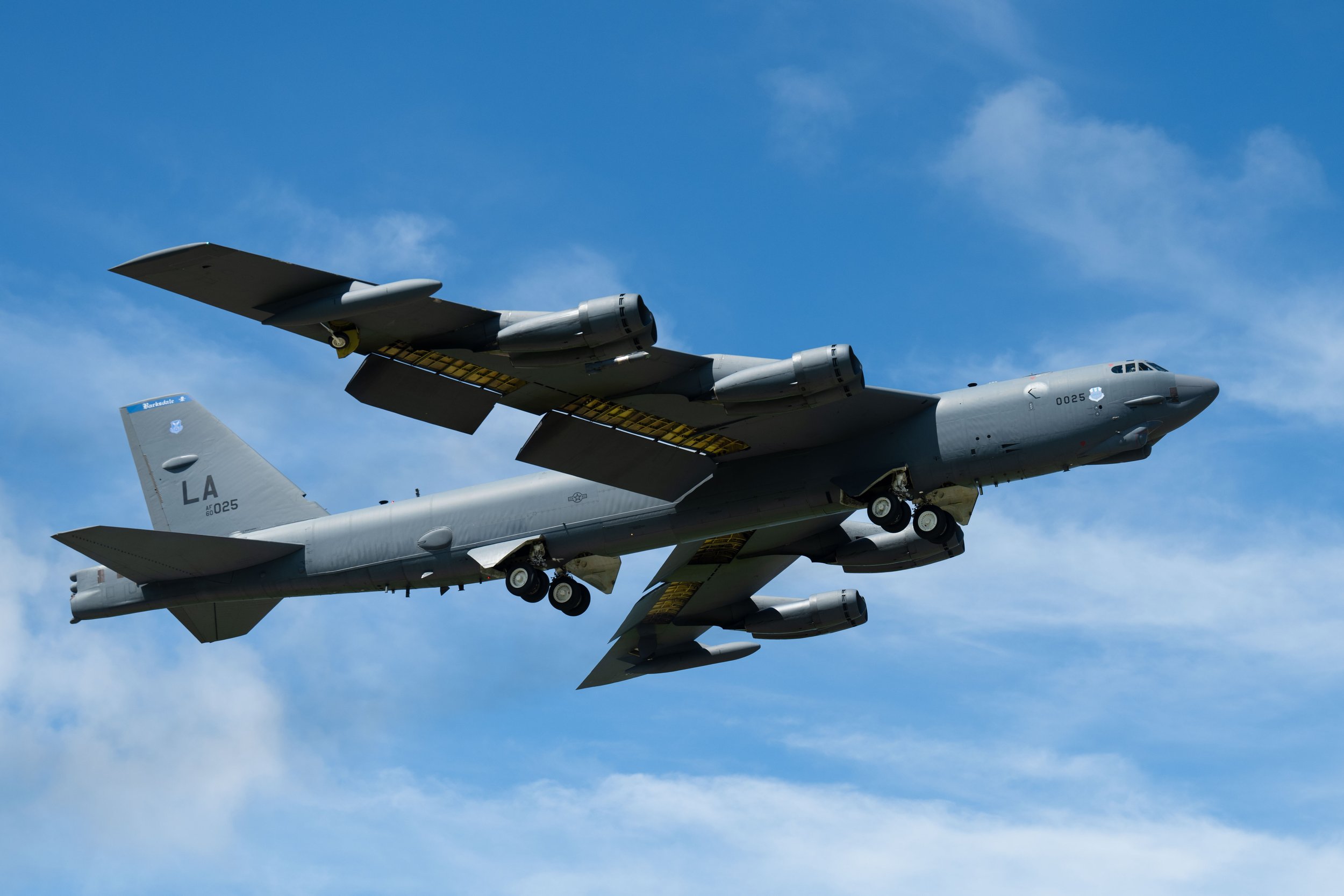

Welcome to the Show
Over the last four years, Air Force Global Strike Command (AFGSC) has partnered with SBCC to bring the best strategic capabilities to warfighters by identifying commercial technology innovations aligned with the Striker’s needs and enabling faster procurement.
The Commercial Capabilities Showcase is a unique opportunity to connect in person with AFGSC key decision makers, receive productive feedback on technology proposals, and foster future relationships with the command.
SBCC assists AFGSC as part of the Commercial Capabilities Integration & Transition Division (CCIT) A5N within Global Strike by identifying funding and transition pathways to field valuable commercial solutions, and bolstering recurring revenue opportunities for commercial companies in the defense market place.

SHOWCASE FINALISTS
x

Air Force Global Strike Command provides strategic deterrence, global strike capability and combat support to US Strategic Command (USSTRATCOM) and other geographic combatant commands. The command is comprised of more than 33,700 professionals operating at two numbered air forces; 12 active duty, Air National Guard, and Air Force Reserve wings; and the Joint Global Strike Operations Center. Weapons systems assigned to AFGSC include all USAF intercontinental ballistic missiles and bomber aircraft, UH-1N helicopters, E-4B National Airborne Operations Center aircraft, and the USAF NC3 weapons system.
About the Customer
ELIGIBILITY
We are looking for companies of any size that offer unique capabilities. This includes both domestic and international companies, provided they are not based in a restricted country or subject to significant foreign ownership, control, or influence by such a country, as defined by the Secretary of Defense under the National Industrial Security Program (or any equivalent program).
United States based small businesses may qualify for additional Research and Development funding opportunities under the SBIR/STTR programs to further develop their technology. More information on the Air Force’s small business efforts can be found here: Air Force Office of Small Business.


TOPIC #1: Integrated Augmented and Extended Reality (AR/XR) Solutions for Mission Readiness in AFGSC Maintenance Operations
DESCRIPTION: AFGSC is seeking an Extended Reality (XR) solution to modernize aircraft maintenance and troubleshooting through immersive, intelligent, and collaborative digital tools. The objective is to enhance technician proficiency, streamline field operations, and bridge the gap between training and real-world application across multiple airframes and skill levels with a solution that addresses the following capabilities:
Durable, Field-Ready Hardware: Ruggedized handheld or wearable platforms with high-performance graphics capabilities suitable for austere operational environments. Hardware must enable real-time, interactive visualization of complex systems while remaining reliable in harsh conditions. Users must be able to maintain full situational awareness while in use.
Lightweight, Deployable Architecture: Solutions should minimize resource-intensive hardware requirements, enabling mobile deployment across diverse devices and locations without sacrificing performance or user experience.
Technical Data Integration: Seamless integration with the Enhanced Technical Information Management System (ETIMS) and other relevant data repositories. Solutions must support ingestion and contextual display of structured and unstructured technical data—critical measurements, warnings, cautions, notes.
• Immersive Troubleshooting Scenarios: Realistic, scenario-based training modules to simulate common and complex maintenance tasks. This capability should allow users to build hands-on experience in a safe, repeatable XR environment.
• Subsystem Visualization: Core to the solution is the ability to digitally expose internal components and subsystems—providing a “see-through” capability to support diagnostics, planning, and procedure validation without physical disassembly.
• Remote Collaboration (“Reachback”): Real-time communication and data sharing between geographically dispersed maintenance teams and subject matter experts. For example, maintainers at forward locations must be able to consult with experts at home bases through shared XR environments.
• AI-Powered Assistance: Optional integration of AI-driven assistants using LLM or similar technology, capable of synthesizing technical information and delivering conversational troubleshooting support for faster, more intuitive procedural guidance.
• Use of Existing Aircraft Models: Leverage available 3D scans and digital models to accelerate development timelines and ensure visual accuracy within XR environment.
• Field Action Capture and Feedback Loop: Enable capture and analysis of real-world maintenance actions, providing valuable insights for training enhancement, process improvement, and readiness analytics.
Mission Focus
2025 Showcase Topics
AFGSC users require solutions to improve capabilities and operations across the command.
TOPIC #2: Additive Manufacturing Solutions for Rapid Sustainment of AFGSC Weapon Systems (to include parts obsolescence and aging fleet availability)
DESCRIPTION: AFGSC is seeking commercial solutions for advanced manufacturing solutions to address the challenge of aircraft parts with limited availability due to legacy parts obsolescence. Proposed solutions must enable the field-level repair and creation of replacement parts using aircraft-grade aluminum and composite materials. Solutions may include unit-constructed and/or contractor-generated approaches. Solutions should specify:
In-Build Qualifications/Abilities: Describe the system’s ability to meet aerospace manufacturing standards, ensure dimensional accuracy, and integrate with digital part libraries and quality assurance protocols during the build process.
Deployable Capabilities: Outline the system’s portability, ease of setup in field conditions, power requirements, environmental tolerances, and overall readiness for deployment in austere or forward-operating environments.
TOPIC #3: Advanced Swarm Detection and Defeat Technologies for AFGSC Base and Missile Field Security
DESCRIPTION: AFGSC is seeking solutions to detect, track, identify and/or defeat small-Unmanned Aerial System (UAS) swarm threats in fixed environments. For this event, a sUAS Swarm system is defined as a group of unmanned aircraft demonstrating coordinated behavior to achieve a common objective. Proposed technologies must emphasize minimal additional manpower efforts and operate effectively with limited operator intervention. Solutions should specify all capabilities, limitations/operational constraints, distances, interoperability, and/or integration with DoD systems and networks, unique capabilities that make your system stand out, and, if applicable, specify:
Detection: Indicate all sensors, maximum operational ranges and altitude, Beyond Visual Line of Sight capabilities, and if the system can differentiate between multiple types of drones (e.g., fast jets, slower prop-drive, mini-helicopters, etc.), ranging in size from Groups 1-3 sUAS.
Track and Identify: Identify how it tracks, identifies, and differentiates between drones, friendly objects, and other items (e.g., reference library, software update, etc.). Also, how often is the library updated, and how does it select the most significant threat to attack first
Defeat: Indicate the system's maximum number of simultaneous Groups 1-3 UAS threats it can defeat and all defeat methods (e.g., kinetic, non-kinetic, high-power microwave, etc.).
System Architecture: Indicate the open architecture framework, modular upgrades, tailored lethality options based on local threats, adaptability to evolving drone technologies, and integration with existing C-UAS architectures.
Command and Control (C2): Describe the C2 systems to manage detection, tracking, and engagement decisions.
Directed Energy: Detail any integration of directed energy systems, including power requirements and effectiveness metrics.
FAA Compliance: Discuss compliance with FAA regulations, including spectrum use, safety zones, and airspace integration.
Weatherization: Indicate if the system has been tested for environmental conditions (e.g., MIL-STD-810H, extreme cold, wind, snow).
TOPIC #4: Modular Tracking/Targeting Platform for Integration of Systems
DESCRIPTION: AFGSC is seeking a modular, vendor-agnostic integration platform capable of tracking and targeting for Directed Energy (DE) Weapon Systems. The solution must enable seamless integration with existing and future platforms, allowing for the targeting of dynamic threats such as UAS and other aerial systems. Proposals should address:
Open Architecture: Solutions must be vendor-neutral, supporting integration with a variety of sensors and DE systems to prevent vendor lock-in and ensure long-term adaptability.
Scalable Integration: Highlight how the platform can scale across platforms and missions, drawing inspiration from models like Lawrence Livermore’s Diamond Tiger, with potential for licensing or co-development with government labs or DE partners.
Defensive Capabilities: Emphasize the platform’s ability to support real-time detection, tracking, and engagement of threats.
Parallel Development: The platform may be developed alongside or in support of ongoing government DE initiatives, and should be designed for compatibility with existing infrastructure.
Deployment Flexibility: Include use cases for various environments and domains, ensuring the platform can support fielded and developmental DE systems.
























